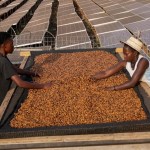(Juba) – Uganda’s exports to neighbouring East African Community (EAC) markets have dropped by UGX 820.5 billion (about $228.2 million), with South Sudan among the hardest hit, largely due to growing non tariff barriers, regional instability, and a shift towards informal cross border trade.
New data from the Bank of Uganda shows that combined formal and informal exports from Uganda to key EAC markets — South Sudan, Kenya, Rwanda, and Tanzania — declined from $1.88 billion between May 2023 and April 2024 to $1.66 billion in the year ending April 2025. This decline is being felt strongly in South Sudan, where exports from Uganda fell from $661 million to $556.12 million, a loss of over $104 million.
The drop in trade to South Sudan is being linked to the wider economic crisis gripping the country. A recent World Bank report titled A Pathway to Overcome the Crisis highlighted the impact of falling oil revenues caused by the ongoing war in Sudan.
South Sudan’s GDP shrunk by 30 percent, with the country losing $7 million per day in revenue, severely affecting its ability to import.
Ugandan economist Julius Mukunda explained that non-tariff barriers (NTBs), such as excessive customs checks and bureaucratic procedures, are discouraging traders from using formal channels. As a result, many are turning to informal trade routes to avoid costs and delays. According to BoU data, informal cross border exports rose from $564 million to $631 million during the same period.
Many of the goods traded informally include maize, beans, fish, bananas, eggs, onions, cattle and tomatoes. Manufactured goods such as footwear, clothing, maize flour, alcohol, soda, mattresses and synthetic hair are also part of the informal trade. South Sudan, like other neighbours, continues to receive these goods through unofficial channels.
Meanwhile, the Democratic Republic of Congo (DRC) remains Uganda’s biggest informal export destination, with trade growing from $318.8 million to $359.7 million, despite Uganda Revenue Authority’s decision to close key border points in March 2025. Smuggling has reportedly increased at closed borders such as Cyanika, Katuna, Kyeshero and Ishasha.
Across the region, NTBs are proving a major hurdle to regional integration. Beatrice Askul Moe, chairperson of the EAC Council of Ministers and Kenya’s Cabinet Secretary for EAC Affairs, revealed during the reading of the 2025/2026 EAC budget that 47 NTBs were reported in the past year, but only 16 were resolved.
Kenya’s protectionist policies have also limited Uganda’s exports. For example, Brookside Uganda, which once sent over 90 percent of its milk to Kenya, has been locked out of the Kenyan market for nearly three years. Mukunda noted that Uganda is now focusing on commercial diplomacy to find alternative export destinations.
Rwanda’s imports from Uganda dropped slightly, from $311 million to $292.75 million. Formal exports fell from $291.44 million to $251.61 million. Kigali’s focus on building its own industrial base, especially in cement and construction materials, has reduced its reliance on Ugandan goods. Cimerwa Cement, owned by Devki Group, has doubled its production from 600,000 to 1.2 million tonnes per year in a bid to make Rwanda self-sufficient.
Exports to Tanzania also declined, falling from $202.33 million to $171.8 million. Uganda’s limited industrial output is partly to blame, as domestic supply struggles to keep up with demand. Shadow Finance Minister Ibrahim Nganda Ssemujju recently told Parliament that more than 40 percent of Uganda’s 2,263 agro-processing facilities are not functional, while over half operate below capacity.
This downward trend in Uganda’s regional exports comes at a critical time for South Sudan, whose economy depends heavily on trade with Uganda for food, consumer goods and building materials. The slump in imports, coupled with domestic inflation and conflict related disruptions, may worsen food insecurity and economic pressures in the country.


















































